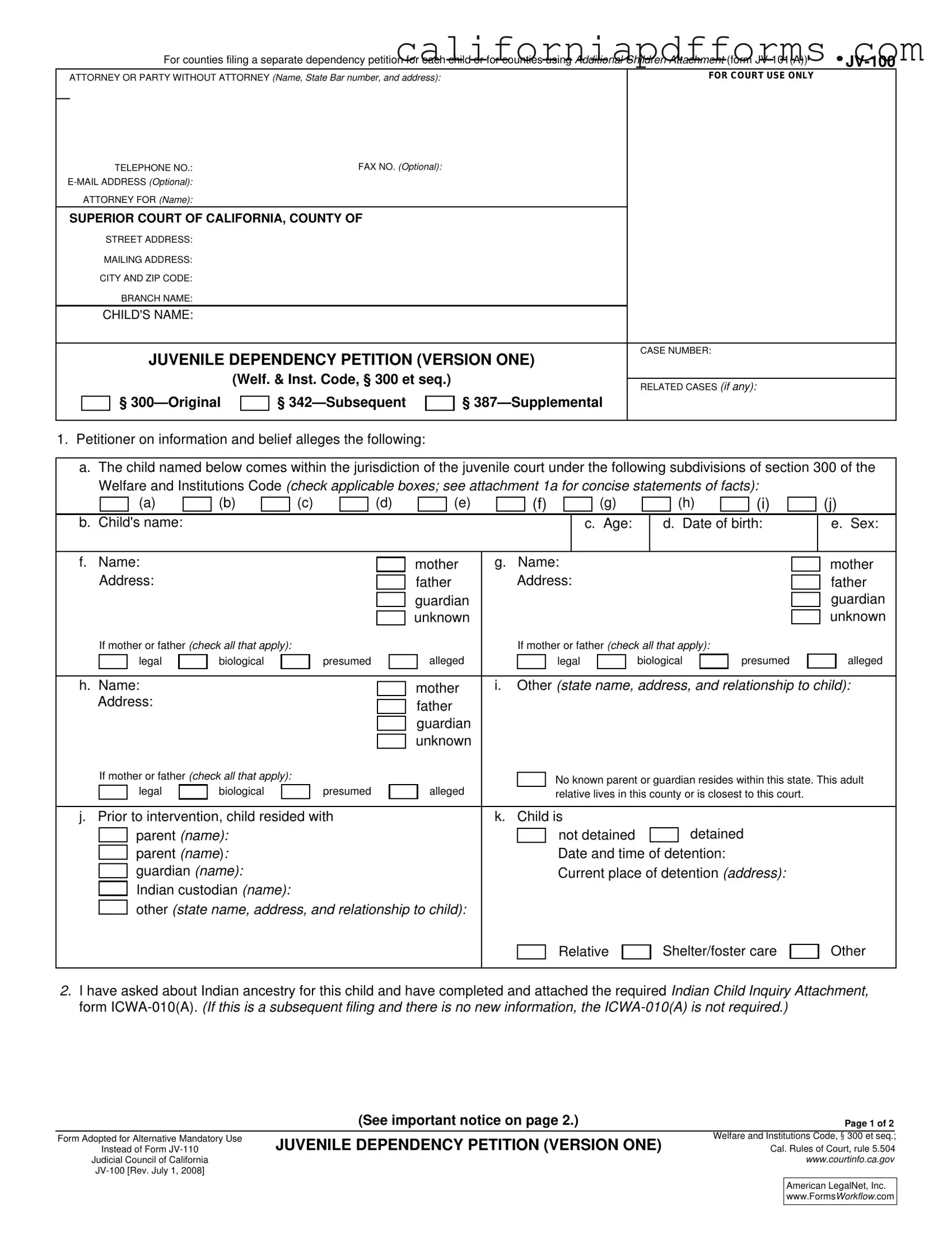Download California Jv 100 Form
The California JV-100 form is a legal document used to initiate a juvenile dependency petition in the state of California. This form is essential for counties that file a separate petition for each child or utilize the Additional Children Attachment (form JV-101(A)). Proper completion of the JV-100 is critical for addressing the needs and rights of the child involved.
To ensure accurate submission, fill out the form by clicking the button below.
Open Your Form Online
